|
BULB LOG 21 25th May 2005
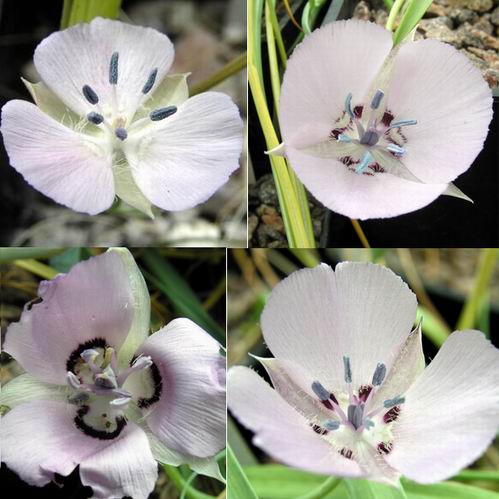
Calochortus uniflora x4
I have grown Calochortus uniflora for many years as the flower in the top left corner. Thanks to a friend sending me a few different selections I now have some much more interesting forms with full petals and very attractive purple markings at the base of the petals. How wonderful our Clubs and Societies are in linking people with similar interests so that we can swap plants and seed - and the internet has made the world a very small place indeed.
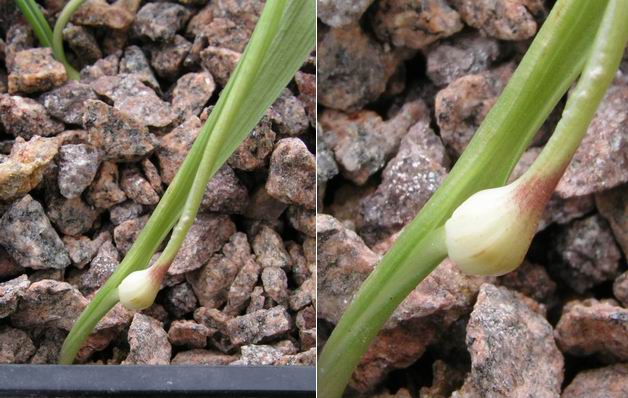
Calochortus uniflora stem bulb
Calochortus uniflora is very easy to grow and it increases both by the bulb making offsets underground and by the production of stem bulbs just where the stem comes through the ground. When the leaves die back these small bulbs can be collected and planted underground with the other bulbs when I repot them in July.
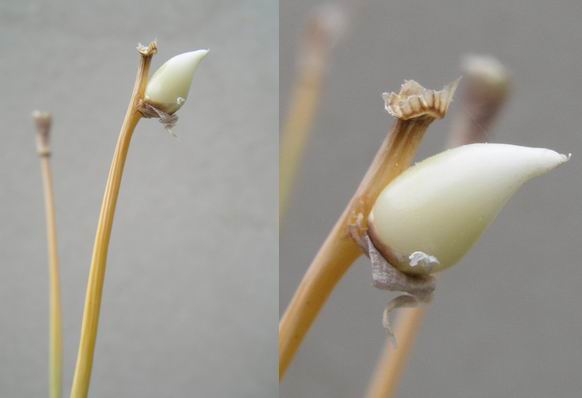
Narcissus stembulb
The formation of stem bulbs is quite common in Lilies and I have seen it in Fritillaria among others but this is the first time I have ever had a bulb form at the top of a narcissus flower stem. This is N. eualbidus and I gathered the seed a few weeks ago by pinching the seed pod off the stem, which was still green at the time. Since then I have left the stems to die back, returning some goodness to the bulb and on one of them a small bulb has formed near the top of stem. Is this a coincidence or was it partly stimulated be me pinching off the seed pod? Aren't bulbs fascinating?

Tulipa bithynica stolons
While checking that the moisture levels were not too high as the bulbs are going dormant I lifted this pot of Tulipa bithynica to find a few small bulbs hanging from stolons poking through the drainage holes - yet another form of vegetative increase we can expect from bulbs.

Crocus seed in pod
As I mentioned in last week's log, my favourite method of increase is by seed. (I hope that some of you have taken up our special offer and joined the SRGC so you too can participate in next year's seed exchange.) It is best to have a daily check on the bulb houses as seed can be shed quickly at this time of year and if the seed is shed into adjacent pots all sorts of confusion will arise.
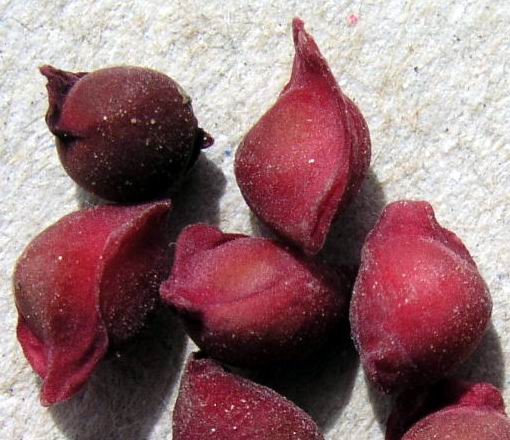
Crocus hadriaticus seed
Just have a look at the colour, texture and the sculptural form of these Crocus hadriaticus seeds. If it is kept under glass and I only have small amounts of seed I often pop the seed onto the gravel and shake the pot so the seed is covered with the gravel. As I will not be watering these pots any more this season the seed will sit dry under the gravel until I repot them in July. A small mark on the plant label will alert me to the presence of the seed which I will collect by passing the gravel through a mesh that lets the seed pass and retains most of the gravel. I can then sow the seed with the bulbs to save the need for yet another pot to find space for.
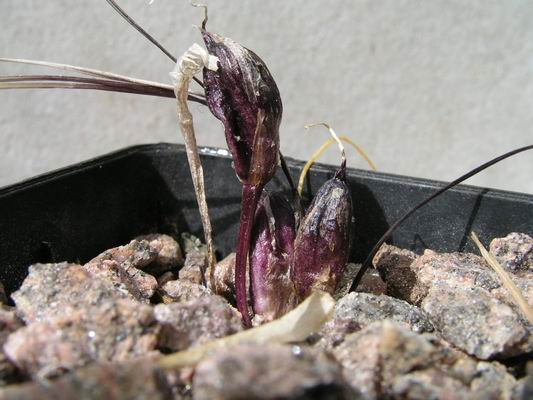
Crocus biflorus ssp. nubigena seed
I am always learning more details about the plants that we grow. The deep purple colour of the seed pods, the petiole and the pedicels ( the base of the leaves) seen as thin threads in this picture is another new observation for me; this is the first time that we have had seed on Crocus biflorus ssp. nubigena which is noted for having black anthers. Having mentioned how we are experiencing a very poor seed set this year due to the bad weather there are always exceptions. Some of these early flowering crocuses, which flowered in February when we were having an exceptional spell of warm weather with temperatures into the high teens Centigrade, are producing seed for the first time for us.
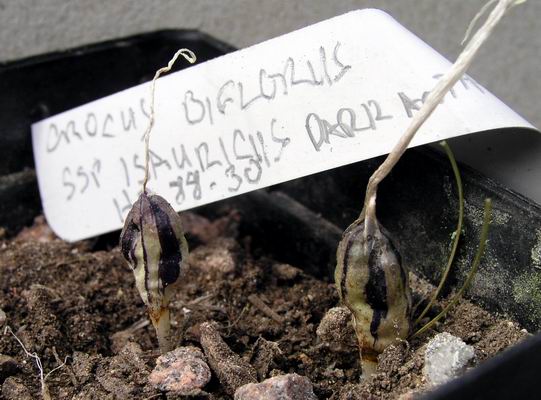
Crocus biflorus seedpods
Similarly the seed pods of this form of Crocus biflorus ssp. isauricus, that I marked as having dark anthers, also has purple markings on its seedpods.
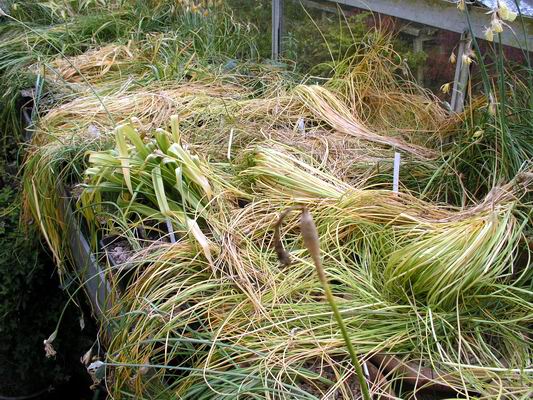
Bulb house narcissus
In the bulb house the narcissus leaves are getting more and more yellow by the day and are well on their way to drying off completely. I have not added any water for a while as there is sufficient in the pots and the sand plunge to supply their diminishing needs.
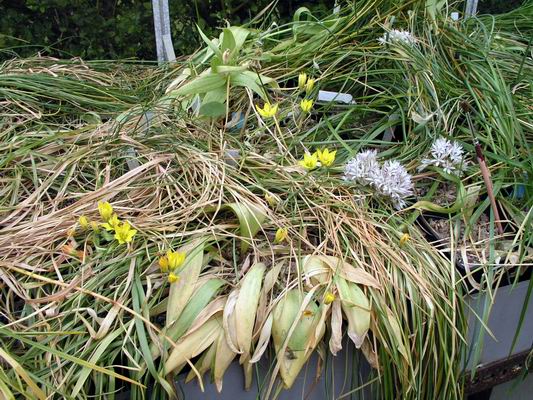
Bulb house yellow leaves
On the other side the crocus and frits are also retreating to dormancy but a few late flowering bulbs are fighting their way through the collapsing mass of foliage. The small yellow South American bulb Nothoscardum ostenii and the large mass of white flowers of a rare North American, Allium yosemitense, have both been etiolated by the competition.
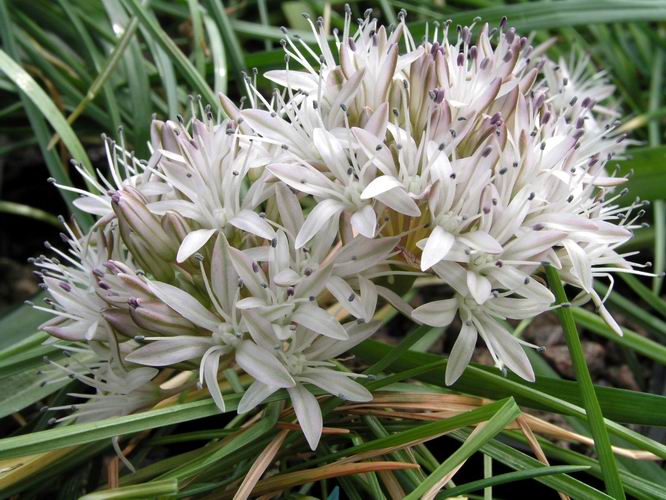
Allium yosemitense
The flowers still look lovely but I must remember and place them in a better position next year so that I can enjoy them as show plants. Although growing with competition as they are above is very similar to how many bulbs grow in the wild.
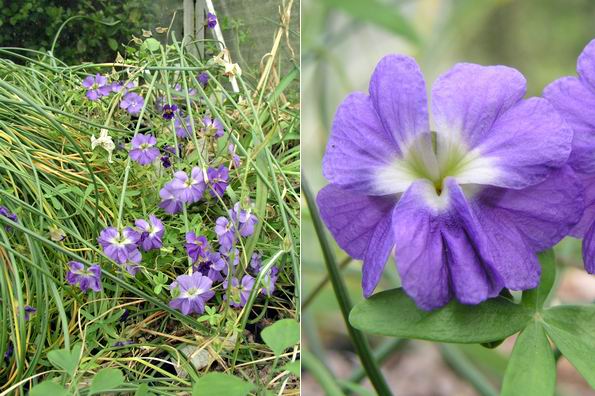
Tropaeolum azureum
Our big show stopper of a plant of Tropaeolum azureum was trashed, for this year, by the sparrows eating through the thin stems just above gravel level but we can still enjoy the flowers on this self sown seedling that has taken up residence in the sand plunge. What nature gives nature takes - not a bad saying?
^ back to the top ^
|

